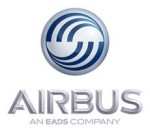Sun, Nov 18, 2012
Efficient And Error-Proof Identification Of Aircraft Components
Airbus has become the first commercial aircraft manufacturer to deploy Radio-Frequency-Identification (RFID) part-marking to aircraft components on all its aircraft families. This innovation, which will bring value-chain visibility, error-proof identification and efficiency savings in component lifecycle management, will be progressively rolled-out in 2013 to all seats and life vests for the A320, A330 and A380 aircraft families.

The annual volume of this RFID part marking extension is estimated to reach 160,000 RFID tags, roughly split across 120,000 life vests and 40,000 seats for these aircraft families. This complements the existing RFID part marking initiative on the A350 XWB which is already underway.
Tom Williams, Airbus’ Executive Vice President, programs says: “Permanent RFID part marking is an answer to the growing need for efficient and error-proof identification of aircraft components throughout their life.” He adds: “The use of RFID part marking will enable the automation of multiple operational processes and is a benefit for all involved in managing the component during its lifecycle: vendor, integrator, airline and MRO.”

The scope of efficiency savings with permanent RFID part marking is substantial. For example, in the past, each one of several hundred life-jackets and seats in the cabin would need to be manually checked and noted, necessitating lengthy manual data entry. But as each Airbus aircraft will soon come pre-equipped with RFID tags on these parts, just one person can read the RFID tags within a few minutes using a lightweight hand-held RFID reader.
The process automatically confirms the presence of each required item, verifies its location and looks-up the associated data about the part (e.g. maintenance history, expiration date etc.). This information can then be used to determine the aircraft configuration and prioritise maintenance planning for items due for inspection, overhaul or replacement.
More News
Pilot’s Failure To Maintain Directional Control During Takeoff Analysis: The flight instructor reported that he and the pilot receiving instruction were practicing takeoffs a>[...]
Have A Story That NEEDS To Be Featured On Aero-News? Here’s How To Submit A Story To Our Team Some of the greatest new stories ANN has ever covered have been submitted by our>[...]
Aero Linx: Guild of Air Traffic Control Officers (GATCO) GATCO is the professional body which represents the professional interests and opinions of those in the UK Air Traffic Mana>[...]
Primary Radar A radar system in which a minute portion of a radio pulse transmitted from a site is reflected by an object and then received back at that site for processing and dis>[...]
“There is never a shortage of ideas from EAA members, AirVenture attendees, our partners, and from inside our own volunteer corps and staff. We’ll take a little time to>[...]
 NTSB Final Report: Cory Green Kitfox Series 7 STI
NTSB Final Report: Cory Green Kitfox Series 7 STI ANN FAQ: Submit a News Story!
ANN FAQ: Submit a News Story! ANN's Daily Aero-Linx (07.30.25)
ANN's Daily Aero-Linx (07.30.25) ANN's Daily Aero-Term (07.30.25): Primary Radar
ANN's Daily Aero-Term (07.30.25): Primary Radar Aero-News: Quote of the Day (07.31.25)
Aero-News: Quote of the Day (07.31.25)




